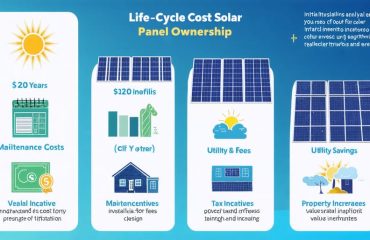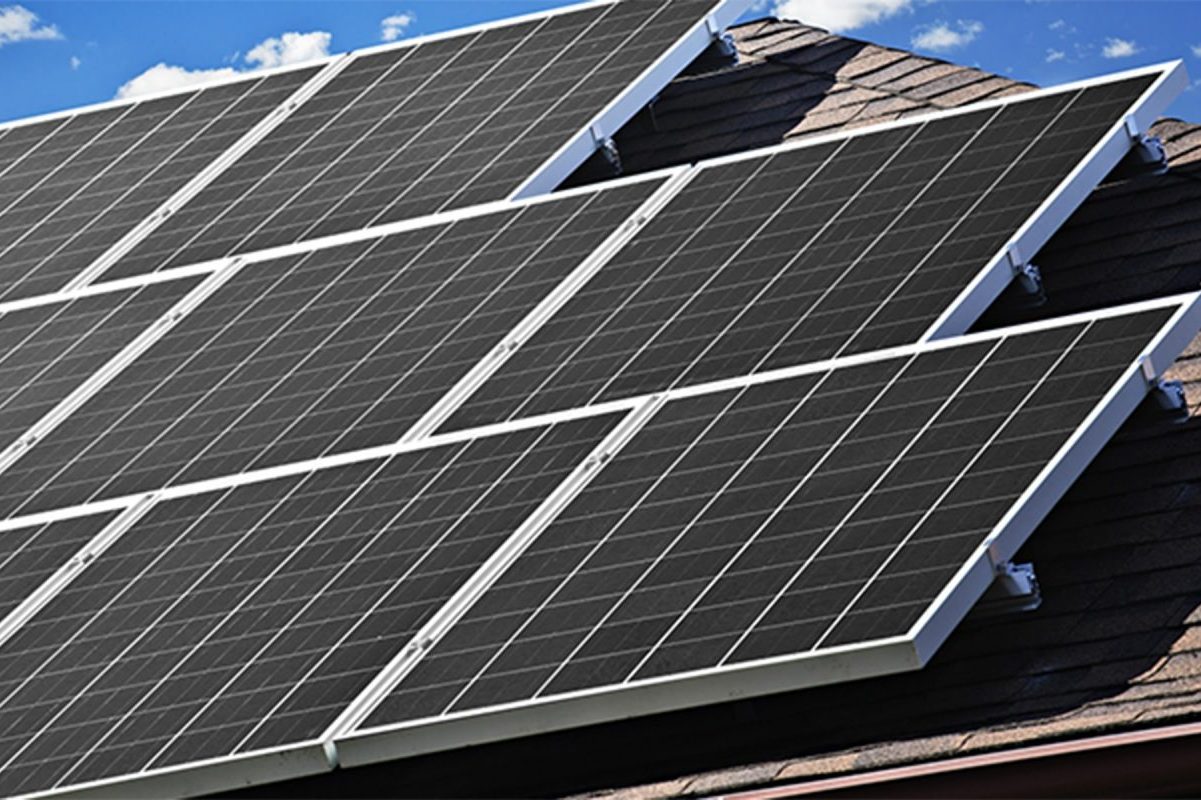Kentucky homeowners can now slash their energy costs by up to 30% through the federal solar tax credit while accessing local incentives that make solar installation more affordable than ever. With Kentucky’s net metering policy allowing you to sell excess power back to the grid and utility companies offering additional rebates, the path to solar savings has never been clearer. The average Kentucky household can recover their solar investment within 8-12 years while enjoying immediate monthly savings on electricity bills.
Recent changes in state legislation have expanded solar access, making 2024 an optimal time to invest in residential solar systems. Beyond federal incentives, Kentucky residents can leverage property tax exemptions, performance-based incentives, and specialized solar loan programs through local credit unions. Whether you’re looking to reduce your carbon footprint or secure long-term energy savings, Kentucky’s comprehensive solar incentive programs offer multiple pathways to make solar power an accessible and financially sound investment for your home.
Federal Tax Credits for Kentucky Homeowners

How the 30% Federal Tax Credit Works
The federal solar tax credit, also known as the Investment Tax Credit (ITC), offers a significant opportunity to reduce the cost of your solar installation. As one of the most valuable solar tax incentives, it allows you to deduct 30% of your total solar system costs from your federal taxes.
Here’s how it works: If your solar installation costs $20,000, you can claim $6,000 as a tax credit. This is a direct reduction of your tax liability, not just a deduction from your taxable income. If you can’t use the entire credit in one year, you can carry the remaining amount forward to the next tax year.
To claim the credit, you’ll need to file IRS Form 5695 with your annual tax return. Keep all receipts and contracts from your solar installation, as these documents are essential for verification. The credit applies to both purchased systems and those financed through solar loans, but not to leased systems.
Remember, this incentive is guaranteed through 2032, making now an ideal time for Kentucky homeowners to invest in solar energy.
Qualifying Requirements and Deadlines
To qualify for the federal solar tax credit, you must own your solar system – leased systems don’t qualify. The system must be installed at your primary or secondary residence in Kentucky, and installation must be completed during the tax year for which you’re claiming the credit. Currently, the tax credit offers 30% of your total solar installation costs through 2032, dropping to 26% in 2033 and 22% in 2034.
There’s no maximum limit on the credit amount, but you must have sufficient tax liability to claim the full benefit. If your tax liability is less than the credit amount, you can carry over the remaining credit to the next tax year. To claim the credit, you’ll need to file IRS Form 5695 with your tax return.
Keep all documentation related to your solar installation, including receipts, contracts, and manufacturer certifications. It’s recommended to consult with a tax professional to ensure you meet all requirements and maximize your benefits. The system must also comply with all applicable local building codes and safety requirements to qualify.
Kentucky-Specific Solar Incentives
Net Metering in Kentucky
Net metering is one of Kentucky’s most valuable solar incentives, allowing homeowners to earn credits for excess energy their solar panels produce. When your system generates more electricity than you’re using, the surplus flows back to the grid, and your utility meter literally runs backward, reducing your monthly bill.
In Kentucky, all utilities must offer net metering to their customers, though specific policies vary by provider. For systems installed before January 1, 2025, utilities must credit excess generation at the full retail rate. After this date, the Kentucky Public Service Commission will determine new compensation rates for each utility.
Major Kentucky utilities like Louisville Gas & Electric (LG&E), Kentucky Utilities (KU), and Kentucky Power have their own net metering programs. These programs typically allow credits to carry forward month-to-month for up to a year, helping you offset higher energy usage during less sunny periods.
To qualify for net metering in Kentucky, your solar system must be sized to meet your personal energy needs, not exceed 45 kilowatts, and comply with all safety and performance standards. It’s important to note that while there’s currently a cap on total net metering capacity for each utility, most haven’t reached these limits yet.
Before installing solar panels, check with your local utility provider about their specific net metering requirements and application process. This ensures you’ll maximize the financial benefits of your solar investment while following all necessary guidelines.

Local Utility Rebates and Incentives
Several Kentucky utility companies offer attractive rebates and incentives to help homeowners transition to solar energy. Kentucky Utilities (KU) and Louisville Gas & Electric (LG&E) provide net metering programs that allow customers to earn credits for excess energy production, though these programs are currently being phased into new rates.
East Kentucky Power Cooperative and its member cooperatives offer special solar-friendly rate structures for residential customers who install solar panels. These rates help maximize savings during peak production hours. Jackson Energy, serving eastern Kentucky, provides members with solar consultation services and custom rate plans for solar installations.
Kentucky Power, serving eastern Kentucky, offers a net metering program with a 1:1 credit ratio for excess generation, making it one of the more generous utility programs in the state. Some municipal utilities, like Bowling Green Municipal Utilities, have their own solar incentive programs, including performance-based incentives that reward higher solar production.
To access these benefits, homeowners should contact their local utility provider directly, as program availability and terms can vary by service area. Many utilities also offer free energy audits to help homeowners determine the best size and configuration for their solar system, ensuring maximum return on investment.
Remember that utility incentives can be combined with federal tax credits and other state programs to significantly reduce the overall cost of going solar.
Property Tax Benefits
Kentucky offers valuable property tax benefits for homeowners who install solar panels, making the investment even more attractive. Under Kentucky state law, residential solar installations are exempt from property tax assessments, meaning your property taxes won’t increase despite the added value solar panels bring to your home.
This exemption is particularly significant because solar installations typically increase a home’s value by 4-6%. For a $300,000 home, this could mean an added value of up to $18,000 without any corresponding increase in your property tax bill. The exemption applies to both the solar panels themselves and related equipment, including inverters, mounting hardware, and battery storage systems.
To qualify for this property tax benefit, your solar installation must be used primarily for on-site consumption. The exemption is automatic – you don’t need to file additional paperwork beyond your standard building permits and solar installation documentation.
It’s worth noting that this benefit continues for the entire lifetime of your solar system. As property tax rates in Kentucky typically range from 0.8% to 1.2% of assessed value, this exemption can result in significant savings over time. For example, on an $18,000 increase in home value, you could save between $144 to $216 annually in property taxes.
The property tax exemption combines with other available incentives to make solar installation more affordable for Kentucky homeowners. When calculating your solar investment’s return, remember to factor in these tax savings alongside energy bill reductions and other available incentives.
Calculating Your Solar ROI in Kentucky

Sample ROI Calculation
Let’s walk through a practical example of calculating solar panel ROI for a typical Kentucky home. Consider a 6kW solar system costing $18,000:
Initial Investment: $18,000
Federal Tax Credit (30%): -$5,400
Net System Cost: $12,600
Annual Benefits:
– Energy Savings: $1,200
– Net Metering Credits: $200
– Annual Total: $1,400
With these figures, the simple payback period would be approximately 9 years ($12,600 ÷ $1,400). However, considering electricity rate increases (averaging 3% annually) and the 25-year solar panel warranty, the total savings over the system’s lifetime would exceed $45,000.
Additional value comes from increased home resale value, typically 4% higher for homes with solar installations. For a $250,000 home, this could mean an additional $10,000 in value.
Remember that actual returns may vary based on factors like roof orientation, local electricity rates, and specific installation costs. Many Kentucky homeowners see complete system payback in 7-11 years.
Factors Affecting Your Return
Several key factors influence your potential return on investment when installing solar panels in Kentucky. Your home’s location and sun exposure play crucial roles, with south-facing roofs typically generating more power. The solar installation costs and system size will directly impact your payback period, while your current electricity consumption patterns help determine potential savings.
Local utility rates also significantly affect your returns – higher electricity rates mean greater potential savings. Kentucky’s average electricity rates, while relatively low compared to other states, have been steadily rising, making solar increasingly attractive. Your chosen financing method, whether cash purchase, solar loan, or lease, will influence long-term savings.
The condition and age of your roof matter too, as does your home’s energy efficiency. More efficient homes typically require smaller solar systems, reducing initial investment costs. Additionally, local shade patterns, weather conditions, and seasonal variations in Kentucky can impact your system’s performance and, consequently, your overall return on investment.
Kentucky’s solar incentives offer homeowners a compelling opportunity to embrace clean energy while securing significant financial benefits. By combining federal tax credits, net metering programs, and local incentives, you can substantially reduce your initial investment and accelerate your return on investment. The average Kentucky homeowner can save thousands on their solar installation and continue to benefit from reduced energy bills for decades to come. Don’t wait to take advantage of these valuable incentives – many are time-sensitive and may change in the future. By investing in solar now, you’re not just making a smart financial decision; you’re also contributing to a more sustainable Kentucky while increasing your property value and energy independence. Contact a local solar installer today to learn how these incentives can work for your specific situation and start your journey toward energy savings.









